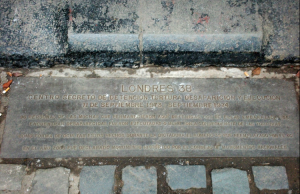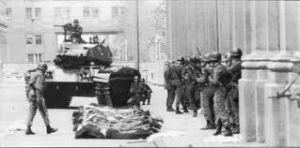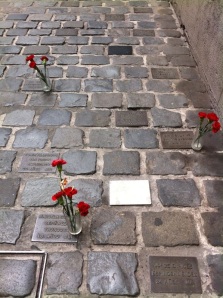
49 years ago marks the anniversary of the original 9/11, when in 1973 the widely supported nationalist regime of Chilean President, Salvador Allende was overthrown by militant leader Augusto Pinochet.
As Pinochet’s tanks rolled through the city streets and his armed forces surrounded the Presidential Palace, Allende made a live radio broadcasted for his country, a farewell speech, in which he assured his adoring public, “Long live Chile! Long live the people! Long live the workers!”
Moments later, troops stormed the palace and Allende, rather then suffer at the hands of his opponent, took his own life.
This event marks the beginning of a very dark period in Chile’s history. For the next 17 years Chileans lived in fear, without democracy and under extreme political censorship.
According to various reports and investigations more than 3,200 people were killed and up to 30,000, including women and children, were tortured by Pinochet’s dictatorship--these were political opponents, journalists, artist and socialist.
Where I work, in the charming Paris-Londres district--a small neighborhood with narrow streets and architecture reminiscent London and Paris boroughs--sits a building that today is known as Londres 38.
This non-assuming, 19th century, three-story mansion was the former headquarters for the Chilean socialist party. Immediately after Pinochet took power, it was transformed into a center for detention and torture.
Here Pinochet’s secret police, known informally as the DINA, were charged with the task of subduing the most threatening opponents of Chile’s leftist political parties.
For ten months Londres 38 became one of the hundreds of secret sites of torture, execution and disappearance. Eighty-four people are known to have died within the building during this period.
Within the many rooms of Londres 38, as many as 96 individuals were held indefinitely, they were blindfolded and commonly interrogated and tortured with electric shocks, or forced to watch as their loved one’s were raped or tortured.
For the Chilean people, the memory of Pinochet’s regime has never left their conscience, though it has taken many years for them to grieve openly. Even today, conversing about the horrors carried out during Pinochet’s dictatorship is considered taboo.
In 2003, Londres 38 was recognized as a historic monument, and in 2007, for the first time in 34 years its doors were opened to the public.
-

- plaque at the doorstep of Londres 38:
“The Secret Center of Detention and Torture Disappearance and Execution. September 11 1973 to September 1974”
96 people, many of which were detained here, two of which were pregnant women, were disappeared, executed or died as a result of being tortured.
As a means of hiding these events during the dictatorship, the number 38, was replaced with 40.
Every so often, survivors and mourners make the anonymous pilgrimage, seeking solace from their traumatic memories.
Last week in observation of International Women’s Day, Londres 38 received an anonymous gift of red carnations that were laid aside the plaque of each female victim.
During the lunch hour, as secretaries and managers leave their offices to eat, a group gathered around the indistinct display. “Do you know what this is for” a man asked me. “We may not like to talk about it” he said. “But what happened in this country should not be forgotten.”
PREVIOUS ARTICLE
"Lives first, loans second. Always. The rest follows.” An interview with Bob Harris →NEXT ARTICLE
Communes, Women, and Microfinance →

















